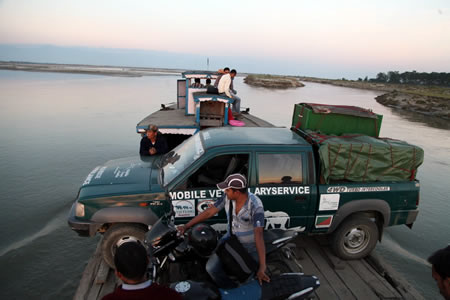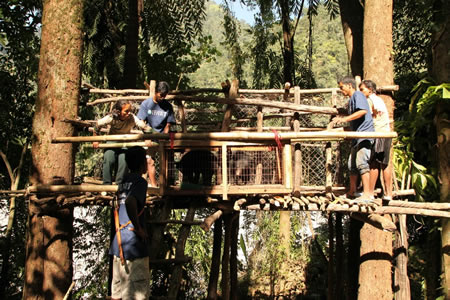The cubs were being hand-raised by the IFAW-WTI (International Fund for Animal Welfare-Wildlife Trust of India) team at the Centre for Wildlife Rehabilitation and Conservation near Kaziranga NP in Assam and the Centre for Bear Rehabilitation and Conservation in Pakke Tiger Reserve in the neighboring state of Arunachal Pradesh. They were moved to Mehao Wildlife Sanctuary in Arunachal Pradesh, to begin acclimatisation to the release site for a soft-release.
Dr Ian Robinson, IFAW Animal Rescue Director, said, “Generally, these cubs are victims of people’s activities – either ill-intentioned, or well-intentioned but ill-informed. Either way, we stand the risk of losing them from the wild. Our understanding of rehabilitation science is increasingly helping reduce this loss, but ideally we would have liked not to reach this situation at all.”
Two of these cubs were handed over by locals of Agartala in Tripura who reportedly found them alone in the wild. The third cub was ‘rescued’ by Indian Army from a village locale at Seppa in East Kameng district in Arunachal Pradesh, and handed over to CBRC.
 Transporting the MVS across a river
Transporting the MVS across a river
“The cubs will now be walked in the forests daily,” said Soumya Dasgupta, IFAW-WTI wildlife biologist. “During these accompanied walks, the cubs learn the ways of the forest instinctively. They will be radio-collared and released after six months.”
The Asiatic black bear (Ursus thibetanus) is one of the four bear species found in India. They are distributed along the Himalayan region and northeast Indian hills, and are threatened particularly by habitat degradation and conflict with people. There are also numerous cases of cubs being picked up by locals, after being found alone.
 At the acclimatisation site
At the acclimatisation site
IFAW-WTI has rehabilitated 30 orphaned or displaced bear cubs in the wild in northeast India till date. “Many of these cubs were supposed to have been found alone by villagers during their forays into the forest to collect resources. There were also a few that were ‘rescued’ from traders,” said Sunil Kyarong, Regional Head – WTI.
The other Indian bear species include the sloth bear, the brown bear and the sun bear. Bears are distributed in 26 Indian states.
Over the past year, IFAW-WTI among other organisations, has been assisting the Indian government to create individual state action plans, and a national plan for the conservation and welfare of the bears. While the state plans provide specific roadmaps to the respective states, the national plan provide an overarching vision and direction.
On October 30, authorities from the bear range states met in New Delhi to finalise the national plan. The final plan will be released during the 21st International Conference on Bear Research and Management to be held in the Indian capital on November 26-30. The conference is being hosted by the Indian Government along with Wildlife Institute of India and WTI, with support from IFAW and the World Society for the Protection of Animals (WSPA).
A post-conference workshop on bear rehabilitation is being planned for the visiting international delegates. The workshop will be held in Kaziranga.
Photos: Sashanka Barbaruah / WTI
 Transporting the MVS across a river
Transporting the MVS across a river